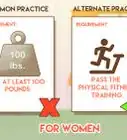This article was co-authored by James Fett. James Fett is a Lawyer based in Ann Arbor, Michigan. With over 35 years of experience, he specializes in alternative dispute resolution, civil litigation, civil rights, class actions, commercial litigation, employment litigation, and labor & employment. James earned a J.D. from The University of Michigan Law School as well as an MBA and BA from The University of Michigan. In 2001, he was awarded a Certificate of Special Congressional Recognition, and the Washtenaw Trial Lawyers Association named him Lawyer of the Year in 1996. He’s also been named a Michigan Super Lawyer by Law & Politics Magazine and one of the ten Most Outstanding Lawyers of the Year by Michigan Lawyers Weekly.
There are 13 references cited in this article, which can be found at the bottom of the page.
This article has been viewed 41,194 times.
State and federal anti-discrimination laws prohibit employers and prospective employers from discriminating against individuals on the basis of age. Specifically, the federal Age Discrimination in Employment Act (“ADEA”) and its state counterparts, like California’s Fair Employment and Housing Act (“FEHA”), protect workers at least 40 years old from age discrimination. If you have been discriminated against based on your age, then you will need to prove it to a government agency or in court.
Steps
Understanding Age Discrimination
-
1Understand the basics of federal anti-discrimination law. The federal law prohibits employers or prospective employers from discriminating against you because of your age if you are at least 40 years old.[1] Accordingly, employers cannot discriminate with respect to any aspect of employment, such as firing, hiring, pay, promotions, layoffs, training, fringe benefits, or other conditions of employment.[2] The primary motivating factor must have been your age; it cannot be mixed in with other legitimate reasons (such as wanting to control expenses).[3] [4] Examples of adverse actions might include:
- You weren’t hired because the employer doesn’t want an “old face” at the company.[5]
- Your supervisor pays you less than younger colleagues even though your performance is equivalent.
- You are harassed because of your age.
-
2Check if a state law applies. Some states have also passed their own age discrimination laws and created Fair Employment Practices Agencies to investigate violations of the law. These laws can provide protection to employees not covered by the federal law.[6]
- To find your state law, perform a basic internet search. Type “your state” and “age discrimination” into your favorite web browser. If you cannot find anything, then check your state’s Department of Labor.
- Despite its name, the federal Age Discrimination in Employment Act (ADEA) does not prohibit age discrimination against workers under 40. This narrows down to state law. The District of Columbia and some states including Michigan, New York, and New Jersey have laws protecting younger workers.[7] In these states, if you are at least 18 years old, your employer cannot legally discriminate against you for being too old or too young unless age is a bona fide occupational qualification (for example, employers can require bartenders to be 21 or older).
Advertisement -
3Meet with an attorney. To understand whether the facts of your case qualify as age discrimination, you should meet with an experienced attorney. You also shouldn’t wait. If you have been terminated, then your employer may give you a waiver and release to sign in exchange for severance pay. You have 21 days to consider the offer.[8]
- If you sign a waiver and release knowingly and voluntarily, then you will forfeit your ability to bring a lawsuit for age discrimination. Accordingly, you should speak to an attorney as quickly as possible.
- To find an experienced employment lawyer, you should visit your state’s bar association, which should run a referral program.
Gathering Evidence of Age Discrimination
-
1Pull your performance reviews. Proving age discrimination will be easier if you have a history of stellar performance reviews.[9] Very few age discrimination cases involve “smoking gun” evidence that your employer discriminated against you based on age. Instead, you will need to use circumstantial evidence. Proving age discrimination based on circumstantial evidence will be harder if there are legitimate complaints about your work performance.[10]
- Gather all copies of your performance reviews and look for complaints. If you received negative comments about your attendance, for example, then you should expect your employer to blame your demotion or firing on your attendance—even if what secretly motivated your employer was your age.[11]
-
2Document comments made about your age. If your boss or another supervisor made negative comments about your age, then you will want to document them as best as you can.[12] [13] You should write down the day and time the comments were made, as well as who made them.
- If the comments were made in an email, then print off the email and preserve it. Any written materials will be helpful evidence.[14]
- If the comments were made to another co-worker, then write down the co-worker’s name and the substance of the comments.
-
3Note the ages of those not affected by a layoff. If you were laid off, then you will want to know the ages of those affected as well as those who were retained. This kind of statistical evidence is usually one of the best ways of establishing age discrimination.[15] [16]
- Although you cannot know with precision the exact ages of your co-workers, you should have a general sense, which is enough to raise an age discrimination claim. Later, if you bring a lawsuit, then you will need to get the exact ages for others affected. You can do this in a process called discovery.
-
4Look for other age discrimination lawsuits. You should see if your employer has been sued for age discrimination before. Although this evidence is not proof that your employer discriminated, it could help prove a pattern.
- Also, you could gain access to discovery, which is generally made public. As part of a lawsuit, another plaintiff may have uncovered internal memos or confidential policies that show a policy of age discrimination. Alternately, another plaintiff may have compiled statistical evidence that would be helpful to your case.
- If you have a lawyer, then the lawyer could do a search for other lawsuits involving your employer. If you want to do a search yourself, then you would probably need to speak to the court clerk about how to access court files. In federal courts, many case files are available online, but in many state courts only paper copies are available.
Reporting Age Discrimination to a Government Agency
-
1Find the appropriate office. You can choose to file a complaint (called a “charge”) with either the federal Equal Employment Opportunity Commission (EEOC) or with an equivalent state agency. Generally, state agencies provide more protections to workers than the federal agency.
- Sometimes, you have to file with a state agency because the federal anti-discrimination laws might not apply to your worksite. For example, your employer may not have employed at least 20 people for at least 20 calendar weeks (which is required by the federal law).[17] Also, some state laws may protect against age discrimination for those under age 40.[18]
- If you file a charge with either the state or federal office, the charge is then automatically filed with the other office.[19]
-
2File a charge with the EEOC. You can file a charge with the EEOC by visiting the nearest field office. There is a map on the EEOC website of the 53 field offices. You should contact the office nearest you to ask if you must make an appointment or whether walk-in appointments are acceptable.
-
3Write a letter to the EEOC. If there is no field office near you, then you can file a charge by writing a letter. Make sure that the letter includes the following information:[20]
- your name, address, and telephone number
- your employer’s name, address, and telephone number
- the number of employees employed there
- a short description of the events you believe were discriminatory
- when the events took place
- that age discrimination was the motivation for the discriminatory events
- your signature
-
4File a charge with the state agency. You may be able to file a charge with a state administrative agency instead of with the EEOC. The process will vary from state to state. In California, for example, you must first file a “pre-complaint inquiry,” which can be done in one of four ways:[21]
- Call 800-884-1684 (or 800-884-1684 if deaf or hard of hearing).
- Print out and mail an Inquiry form to any Department of Fair Employment and Housing Office.
- Complete the Inquiry form and email it to contact.center@dfeh.ca.gov.
Proving Age Discrimination at Trial
-
1Understand when you can sue. You cannot bring a private lawsuit against your employer until you file a charge with the EEOC. You can file a lawsuit any time after 60 days have passed from the date you filed your charge (but not later than 90 days after the investigation has concluded).[22]
-
2Prepare witnesses. To prove age discrimination at trial, you will have to present evidence in the form of witnesses and documentary exhibits. You or your attorney should look over the evidence you gathered and contact anyone who may have seen or heard discriminatory actions by your employer.[23]
- Your attorney may prepare the witnesses by running through a mock examination. The purpose of this exercise is to get the witness comfortable with answering questions. Adequate preparation is important so that your witnesses appear credible.
- You can compel the attendance of your witnesses by issuing them a subpoena to attend the trial. Subpoenas can generally be obtained from the court clerk. Once completed, they must be served on the witnesses, either through the mail or personally. Ask the court clerk for acceptable methods of service.
-
3Prove disparate treatment at trial. There are two ways to prove age discrimination: “disparate treatment” and “disparate impact.” Disparate treatment means that you were treated differently because of your age. Disparate treatment is intentional discrimination.
- In order to proceed under this theory, you will need to prove that you are 40 or older and were qualified for your job. Furthermore, you must show that you suffered an adverse employment action and that people under 40 were not treated the same.
- Once you prove these elements, the burden shifts to the defendant employer to prove a legitimate reason for the action that is not discriminatory. If the employer meets that burden, then you must show that the “legitimate reason” is actually a pretext.
-
4Prove disparate impact at trial. Disparate impact means that the employer used a neutral policy that nevertheless resulted in a disproportionate impact on people 40 and older. Statistical evidence is particularly helpful with these claims.
- Once the plaintiff shows a disparate impact, then the employer must show that the negative impact is based on a reasonable factor other than age.[24]
- A reasonable business factor is one reasonably designed and administered to achieve a legitimate business purpose. For example, if a police department required applicants to pass a physical fitness test, then they would probably have a legitimate business purpose in requiring the test if it accurately measured the speed and strength necessary for the job.[25]
- If such a physical test were used for computer programmers, however, then the test is unlikely to serve a legitimate business purpose, since speed and strength are not traits necessary for computer programmers.
Expert Q&A
-
QuestionWhat is direct evidence of age discrimination?
 Lyle Solomon, JDLyle Solomon is an Attorney and the Owner of the Law Office of Lyle D. Solomon. With nearly three decades of experience, he practices civil law and specializes in consumer debt relief services and bankruptcy. Lyle is also the author of Think Different! Save More! He holds a BA in Criminal Justice from The University of Nevada, Las Vegas, and a JD from The University of Pacific, McGeorge School of Law.
Lyle Solomon, JDLyle Solomon is an Attorney and the Owner of the Law Office of Lyle D. Solomon. With nearly three decades of experience, he practices civil law and specializes in consumer debt relief services and bankruptcy. Lyle is also the author of Think Different! Save More! He holds a BA in Criminal Justice from The University of Nevada, Las Vegas, and a JD from The University of Pacific, McGeorge School of Law.
Attorney Well, the very best way you can prove discrimination at work is by written memos. They are very rare, but they do exist from time to time. Other than that, video or audio evidences of the discriminatory acts could work. If possible, have eyewitnesses to help your case.
Well, the very best way you can prove discrimination at work is by written memos. They are very rare, but they do exist from time to time. Other than that, video or audio evidences of the discriminatory acts could work. If possible, have eyewitnesses to help your case.
Warnings
- This article is for general purposes only and is not intended to provide legal advice. If you need help, please contact an attorney.⧼thumbs_response⧽
- You should think carefully before bringing a lawsuit for age discrimination. A future employer who sees that you have brought an age discrimination suit might consider you trouble and avoid hiring you.[27]⧼thumbs_response⧽
- The ADEA is not absolute, it allows age discrimination if age is a "bona fide occupational qualification". This means if your employer can prove how old age can negatively affect your ability to do the job, the ADEA does not protect you.⧼thumbs_response⧽
Expert Interview
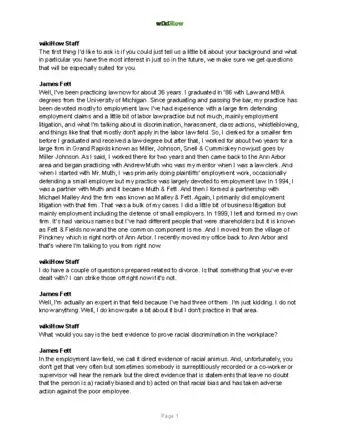
Thanks for reading our article! If you'd like to learn more about age discrimination, check out our in-depth interview with James Fett.
References
- ↑ James Fett. Lawyer. Expert Interview. 22 November 2022.
- ↑ http://eeoc.gov/laws/types/age.cfm
- ↑ Gross v. FBL Financial Services, Inc., 557 U.S. 167 (2009)
- ↑ http://www3.ce9.uscourts.gov/jury-instructions/node/191
- ↑ James Fett. Lawyer. Expert Interview. 22 November 2022.
- ↑ http://www.forbes.com/sites/nextavenue/2013/04/30/what-it-takes-to-win-an-age-discrimination-suit/2/
- ↑ James Fett. Lawyer. Expert Interview. 22 November 2022.
- ↑ http://www.forbes.com/sites/nextavenue/2013/04/30/what-it-takes-to-win-an-age-discrimination-suit/2/
- ↑ James Fett. Lawyer. Expert Interview. 22 November 2022.
- ↑ Lyle Solomon, JD. Attorney. Expert Interview. 18 August 2021.
- ↑ Lyle Solomon, JD. Attorney. Expert Interview. 18 August 2021.
- ↑ http://www.forbes.com/sites/nextavenue/2013/04/30/what-it-takes-to-win-an-age-discrimination-suit/2/
- ↑ James Fett. Lawyer. Expert Interview. 22 November 2022.
- ↑ Lyle Solomon, JD. Attorney. Expert Interview. 18 August 2021.
- ↑ http://www.legalmatch.com/law-library/article/how-to-prove-age-discrimination.html
- ↑ James Fett. Lawyer. Expert Interview. 22 November 2022.
- ↑ http://eeoc.gov/employees/coverage_private.cfm
- ↑ http://eeoc.gov/laws/types/age.cfm
- ↑ http://eeoc.gov/employees/howtofile.cfm
- ↑ http://eeoc.gov/employees/howtofile.cfm
- ↑ http://www.dfeh.ca.gov/
- ↑ http://eeoc.gov/employees/lawsuit.cfm
- ↑ Lyle Solomon, JD. Attorney. Expert Interview. 18 August 2021.
- ↑ http://eeoc.gov/laws/types/age.cfm
- ↑ http://www.eeoc.gov/laws/regulations/adea_rfoa_qa_final_rule.cfm
- ↑ James Fett. Lawyer. Expert Interview. 22 November 2022.
- ↑ http://www.forbes.com/sites/nextavenue/2013/04/30/what-it-takes-to-win-an-age-discrimination-suit/2/
About This Article
If your employer or prospective employer has illegally discriminated against you due to your age, there are things you can do. Your first step will be talking to an attorney, who will be able to help you work out if you have a case against the employer. Then, you’ll need to gather evidence of discrimination to support your claim. If your boss or supervisor made negative comments about your age, record these along with the date and time they were made. If you were laid off, record the ages of those who were let go and those who weren't to look for a pattern. If your company has lost a lawsuit for age discrimination before, this may also help your case. For more tips, including how to take an employer to court for age discrimination, read on!












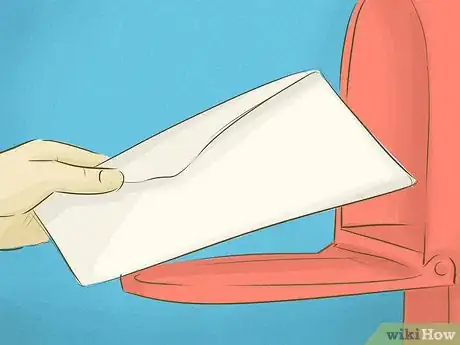


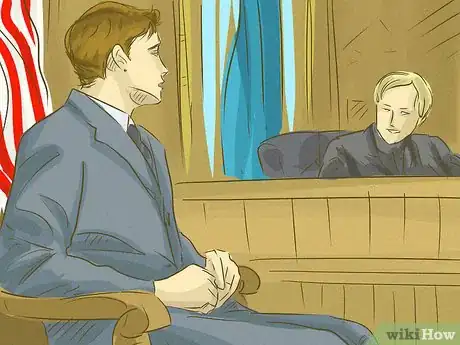

-Step-24.webp)

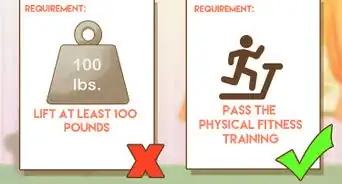

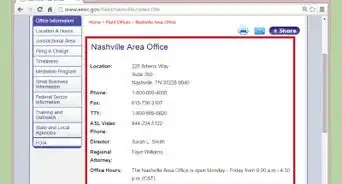









-Step-24.webp)

